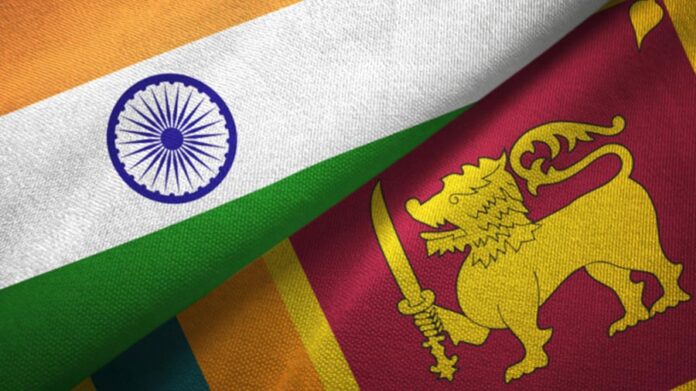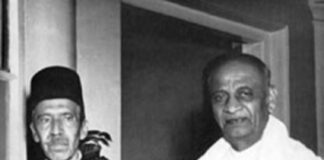Though the Janatha aragalaya (people’s struggle) against the Rajapaksas was spontaneous, the role of the Left organisations in galvanising this into a movement that ousted the Rajapaksa family is an important landmark in Left politics. Leftist political parties and organisations have always ideologically appeared to be sympathetic to the aspirations of masses. At the grassroots level, they make people aware of their socio-economic rights and thereby manage to create a support base, which can be exploited to mobilise the masses.
By Smruti S. Pattanaik
In Sri Lanka, Left political organisations—the Janatha Vimukti Peramuna (JVP) and its breakaway faction, the Frontline Socialist Party (FSP), Peratugami Samajavadi Pakshaya in Sinhala—have been trying to carve a niche for themselves in the light of the socio-economic turmoil that the country has witnessed in the recent past. Youth fronts of the JVP—Socialist Youth Union and Socialist Students Union of JVP and FSP—Youth for CHEnge and Revolutionary Students Union, were at the forefront motivating and mobilising the masses to fight against the corrupt regime. These trade unions, students’ organisations and other Left-oriented artists, women organisations participated in large numbers in the protest movement.
The radical Left has played a role in Sri Lankan politics even in the past. The JVP is responsible for two insurrections in 1971 and 1989, both of which were suppressed by the state. The Inter University Students’ Federation (IUSF), Anthar Vishwa Vidyalaya Shishya Bala Mandalaya in Sinhala, was a confederation of around 70 students’ unions which was formed in 1978. The activities of IUSF served ‘as a bridge between student politics and insurrectionary movements in the country’.1 It is now believed to be affiliated to FSP.
The FSP held its first convention in March 2012 in Colombo’s Sugathadasa stadium where it announced an 18-member Central Committee. The organisation, led by Premakumar Gunaratnam, who is presently the General Secretary, organised the breakaway faction of the FSP after the cadres felt JVP was moving away from its revolutionary agenda. The objective was to ‘practice a socialist program instead a social-democratic program’, as there were a ‘number of unfinished democratic revolutionary objectives’ in Sri Lanka.
In March this year, the FSP started ‘Movement for People’s Struggle’ or Jana Aragala Vyaparaya as it felt the JVP has moved away from people’s struggle. FSP accuses JVP of deviating from its ideological core and being involved in ‘parliamentary politics, trade unionism, reformism and racist tendency…. JVP had been absorbed by coalition politics and class collaboration’. The JVP though has been collaborating with FSP in this aragalaya, as admitted by the FSP. However, the JVP has maintained its ideological distance from FSP.
The JVP’s immediate agenda is to capture the political space after Rajapaksa’s exit and bank on the lack of legitimacy of major political parties and Rajapaksa’s Sri Lanka Podujana Peremuna (SLPP). Anura Dissanaike, leader of Sri Lanka’s National People’s Power (NPP), a coalition led by his party JVP, states that the parliamentary majority was held by ‘a group rejected by the people’ and that it will not cater to the people’s demands. Instead, he called for an ‘interim government’ under whom the country should be brought back to normalcy followed by elections.
On 9 April, houses and vehicles of 40 MPs belonging to the ruling SLPP were burnt down after Rajapaksa’s supporters and protestors were engaged in attacking each other. The government accused the JVP and its youth organisation of being behind this torching of houses. Though the electoral strength of the JVP is around 3 per cent, the Left organisations have the ability to mobilise masses and hold successful demonstrations.
The resignation of President Gotabaya has strengthened people’s power. The FSP which has been at the forefront of this struggle now argues for the establishment of People’s Power Councils at all levels—from village to urban areas—as a consultative body that will advise the government. Their argument is that people who have brought this political change cannot be ignored. Gunaratnam, the leader of FSP, asserts that ‘people’s power, as a new pillar, could not be disregarded. …Our long-term goal is to structurally strengthen an external force parallel to the democratic-trinity’.
The government succeeded in securing a loan from the Chinese Development Bank. However, it refused China’s proposal as the Chinese bank offered to buy the entire US$ 1 billion sovereign bond issue. China’s currency swap deal of US$ 1.5 billion signed in March 2021 is pending as the country needs to have enough forex reserve to support three months of import. China has provided US$ 75 million in emergency humanitarian assistance. In January this year, Wang Yi, Chinese Foreign Minister suggested that Sri Lanka can use the Colombo Port City and Hambantota Port projects as ‘engines for pushing forward bilateral cooperation’. It has offered China US$ 1 billion in loan to pay off debt that Sri Lanka owes to China.
On 22 June, Sri Lanka declared that the economy has ‘completely collapsed’. In April, it had announced that it is going to default in its US$ 51 billion foreign debts. Revenue dried up due to a series of ill-conceived economic policies banning chemical fertiliser, reducing value added tax (from 15 per cent to 8 per cent), abolishing nation building infrastructure tax of 2 per cent, abolishing debit tax imposed on banks, Capital Gains Tax, Pay As You Earn Tax, debt services tax, withholding tax on interests, reducing income tax on the construction industry (from 28 per cent to 14 per cent), reduced VAT on condominium properties, reduced the telecommunications levy to 25 per cent, and tax-free threshold for turnover for VAT was raised from the existing Rs 1 million to Rs 25 million.
Political instability in the neighbourhood has always been a major concern for India. As the closest neighbour of Sri Lanka, with an emphasis on ‘neighbourhood first’, India has stepped in to provide US$ 3.8 billion credit line consisting of essential items as economic crisis deepened in April this year. Yet, there are several instances where attempts were made to drag India to the ongoing political crisis and portray it as a supporter of the Rajapaksa regime.
Amidst people’s movement, there were several social media posts trying to connect India with the then ruling Rajapaksa regime. This forced Indian High commission in Colombo to refute such charges through its twitter handle. The Ministry of External Affairs (MEA) Spokesperson also rejected these rumours. MEA in several statements underlined that India stands with the people of Sri Lanka as they seek to realise their aspirations for prosperity and progress through democratic means and values, established institutions and constitutional framework.
On 7 May, Sri Lankan media carried a picture of a water cannon used against the protesters and mentioned that it was purchased as part of US$ 1 billion credit line from India. The Indian High Commission was forced to issue statement detailing items that are supplied under the US$ 1 billion credit line that was extended on 17 March. As India watched the unfolding political crisis on 9 May, there was a rumour that Mahinda Rajapaksa has fled to India and India is providing shelter to him. This forced the High commission to state that such rumours were ‘fake and blatantly false reports, devoid of any truth or substance’.
The High Commission also noted that such incorrect reports don’t make any constructive contribution to the cooperation and efforts undertaken to address the ongoing challenges faced by the people of Sri Lanka. On 10 May, MEA spokesperson stated that ‘India will always be guided by the best interests of the people of Sri Lanka expressed through democratic processes’ in a bid to distance itself from the Rajapaksa regime.
India’s effort to stand by Sri Lanka providing essential items was not with politics. A visit by Foreign Secretary of India who led a delegation to Sri Lanka on 23 June to hold talks with senior officials on the economic situation in the country and the short-term and long-term assistance requirements was interpreted as India exploiting the economic situation to deepen its influence. Some also argue India’s presence in Sri Lanka would mean ‘dilution of sovereignty’.
On 20 July, rumours were again floated to link India to the victory of Ranil Wickremesinghe as the President, for the remaining period of the present term of Presidency (till 2024). India called such reports ‘a figment of someone’s imagination’ and asserted that it ‘doesn’t interfere in internal affairs and democratic processes of another country’.
There is a suspicion that the Sri Lankan Left parties—the FSP and JVP—who are deeply suspicious of Western countries, IMF and also India, are behind the spread of these motivated rumours. JVP was once a breakaway faction of pro-Chinese Left party and is deeply anti-India. In the past, it was opposed to the Tamil demand for devolution of power and strongly opposed the 13th Amendment. It always considered the plantation workers as fifth column of India and strongly supported military action against the LTTE.
FSP thinks that India has a hidden agenda for extending US$ 3.8 billion in aid. It is not surprising given that the FSP has been opposing Indian investments in Sri Lanka. On the Trincomalee oil tank, for instance, the party position as articulated by one of its leader Pubudu Jayagoda, was that ‘India is investing and taking control of these tanks because this also gives them access to valuable strategic lands in Trincomalee’.
Both FLSP and JVP along with trade unions backed by other political parties held protests against Sri Lanka government’s decision to give the Eastern Container Terminal to Adani Group led Adani Ports and Special Economic Zone (APSEZ) to develop. Recently, MMC Ferdinando, Chairman of Sri Lanka’s Ceylon Electricity Board (CEB), while appearing before a parliamentary panel, stated that the energy project in Mannar was allocated to the corporate group Adani due to pressure exerted by India. Even though he later retracted the statement, it fuelled suspicion about India.
It is important to note while in Colombo, people from all walks of life irrespective of religion and ethnicity participated in the uprising, one did not see such mass movement in the north and East.
The existential problem for the Tamils is their political aspiration. Not surprisingly, many rejected the Rajapaksa government’s much-touted argument of economic prosperity eliminating political alienation of Tamils. India’s stance on the Tamil issue shapes the public opinion of Sinhalese on India.
It is important for India to ensure that it continues to provide aid to overcome the humanitarian crisis caused by economic mismanagement of the previous regime. It is also clear that no other countries have extended any major help to the people who are struggling to make both ends meet. While the IMF financial relief may take some time, India must continue to extend help to the people of Sri Lanka while keeping itself away from antagonistic domestic politics.
This article first appeared in www.idsa.in and it belongs to them.








